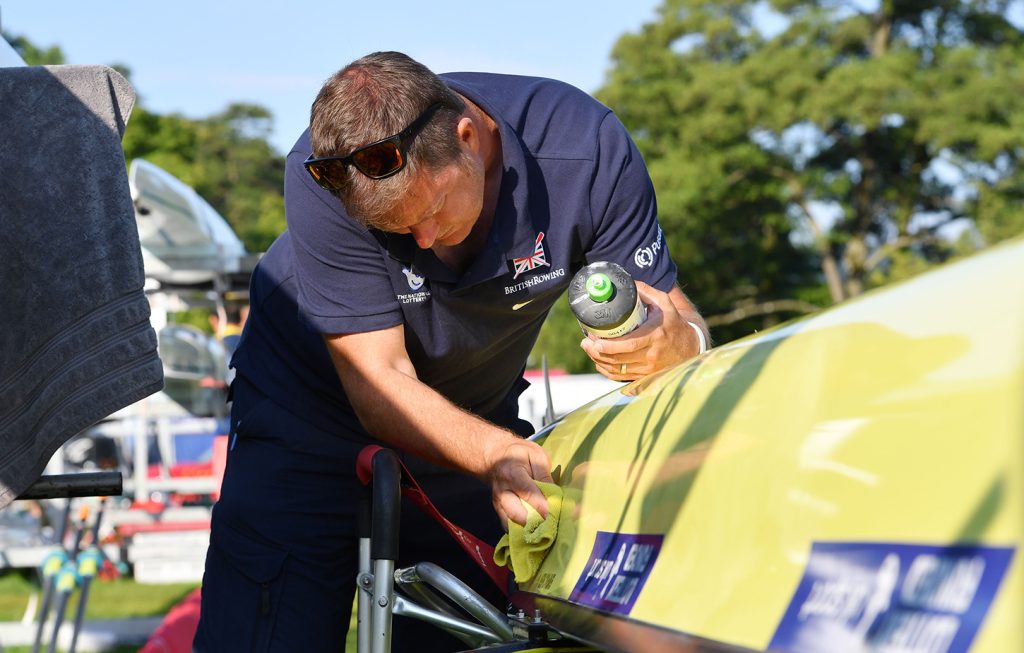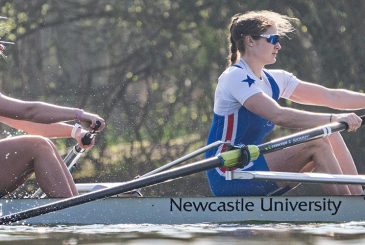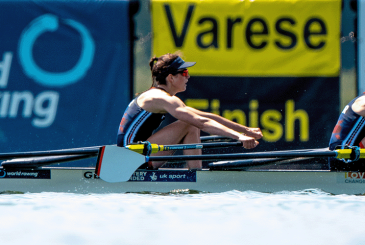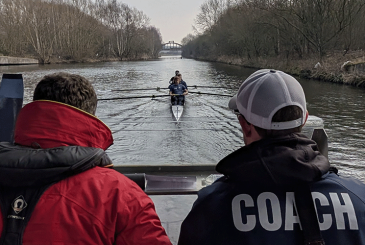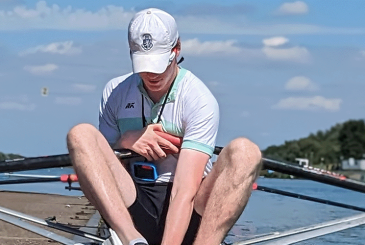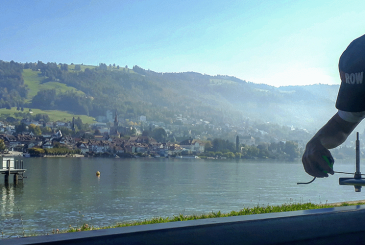Earlier this year Paul Stannard was appointed as Men’s Olympic Head Coach for the GB Rowing Team, moving from leading the men’s sculling programme. As Lead Sculling Coach, Stannard led the British men to a stunning silver for the men’s quadruple scull at the Tokyo 2020 Olympic Games, continuing a run of success which began with a historic world championship bronze in 2013. Joanne Harris caught up with him to talk about his coaching priorities
Stannard’s career as a coach stretches back quite a while; to his days as a junior rower, in fact. He started out on a learn-to-row course at Kingston RC before taking it up properly at Hampton School, and he dabbled in coaching while still at school himself.
“As an athlete I had some very good coaches, learned a lot, loved the sport and had a lot of fun,” Stannard says, explaining his motivation for getting into coaching more seriously.
“Towards the end of my junior years I felt that I didn’t totally achieve what I wanted to achieve as an athlete. I wanted to help people not be in that position going forward. I felt that to achieve international success in the sport I probably needed to move into coaching.”
Having achieved international success, Stannard says he also thinks he has consistently met his goal of helping athletes get to where they want to be.
Coach the people
Stannard says it’s important to tailor coaching styles to the group in front of the coach, and to keep evolving what you do.
“Make sure you keep coaching what’s in front of you, don’t assume you know what an athlete wants or needs based on who you’ve coached before. That’s a really easy trap to fall into,” he warns.
For most programmes a lot of things will stay the same year-on-year – particularly the general shape of the season, and the technical model being applied – but tweaks can be made for the group that year. Coaches should also keep an open mind as to what rowers might have experienced beforehand.
It is important to appreciate the experience of the athletes
“In the past we have had new guys come into the team who kept surprising me with some of the stuff they didn’t know,” Stannard explains.
Stannard recalls a moment in a post-race debrief when he asked who would take responsibility for a poor start. He thought that was a reasonable question, but it became apparent later that its directness had surprised some of the crew.
“We had a really good wash-up meeting afterwards and one of the athletes said, ‘I didn’t realise we were going to be that brutally honest with each other’,” he says.
The moment reminded Stannard that it is important to appreciate the experience of the athletes, and crucially, give them time to prove themselves.
The [coaching] team were careful not to read too much into erg scores and other data at the outset.
The GB squad last season saw an influx of new athletes who had not competed at the delayed Tokyo 2020 Olympic Games, and Stannard gives the development team, led by Peter Sheppard, a lot of credit for getting the new generation fired up and ready to come to Caversham. He says the team were careful not to read too much into erg scores and other data at the outset.
“It would be really easy for me to take all the data on the athletes and say I want Billy, but I don’t want Bob. If I’d done that, on paper we’d have risked missing out on somebody based on numbers,” he adds. “It’s really important to give people a chance and show what they’re capable of, and last year was a massive example of that.”
Keeping up the standards
Crew selection, Stannard agrees, is “100 per cent” the hardest part of being a rowing coach.
“Ideally you know first time every time what the combination’s going to be that works, who’s going to work well with who, but sometimes it doesn’t work like that. You have to give the athletes time to show what they can do but at the end of the day if it’s not working you’ve got to be prepared to change it,” he says.
It’s [an athlete’s] job to select themselves, it’s not my job to select them.
Although the actual decision about line-ups may come down to the coach, or the GB selection panel, ultimately Stannard says it is critical to make athletes aware that they themselves have the biggest responsibility for selection.
“Every single athlete will think they should be in a boat, or they wouldn’t be there in the first place. It’s their job to select themselves, it’s not my job to select them. If I’m having to split hairs over selecting Billy or Bob, one of them should have done something earlier in the season to make the difference,” Stannard says.
The process should be informed by what is going on within the event you are targeting, he adds. Look at the trends and set your programme and recruitment policies around them. Stannard says he adopted this approach when he was setting up the GB World Class Start centre in Bath in 2003.
“Start had selection standards and the first thing I did was set my standards higher,” he says. “Start is a competitive structure, and you want your centre to be the best centre. If you’re already picking very good people, if you can add a couple of per cent on top of that you get even better people.”
As important is a clear objective, whether that be for a single season or an Olympic cycle.
“We had a great set of results this season but it’s only going to get harder.”
“I often feel that what I do is not that complicated. Take one step at a time, do the basics incredibly well, have a sense of perspective as to where you are in the season, where you’re headed,” Stannard reflects.
At the moment, the GB team seems to be headed in the right direction. Stannard says planning is advanced for the next two Olympic Games, and he credits a fresh, “no-nonsense” approach from the new athletes on the squad for a change in mood at Caversham, as well as the hard work of the rest of the coaching and support team.
“There’s definitely still work to do,” he adds. “We had a great set of results this season but it’s only going to get harder.”
